I wrote this article in 2004, but it still matters, maybe even more now. Felt like re-posting it today.
REQUIEM FOR THE MUSE
The former Muse Community Arts Center, where I used to have my studio, is fenced and empty, in preparation for her imminent demise. Like so many arts communities in American cities, we have been evicted by gentrification, real estate development, and urban "development".
I've been told She stood empty some 7 or 8 years ago, the old YMCA building no one, except a few visionaries, wanted any more. I'm not writing about the history of the Muse, or the brave people who founded her, and why. I don't know if they feel saddened, or rewarded for their efforts, or just relieved to have the building sold and done with. I’m also not writing about those who are trying to relocate some part of her essence else where. I just want to remember the life, and death, of an urban Muse.
In those 7 or 8 years, a theatre developed, and classrooms opened. Reasonably priced studios filled with painters, sculptors, alternative healers, and non-profits. An occasional gallery hosted shows of professional artists, aspiring artists, and young people just learning to express their imaginations. Drummers drummed, dancers danced, actors created personae, students came and went with easels in hand. A reiki master and a new age minister held classes on Sundays, along with the Vineyard Church, who also provided donuts and coffee for the homeless as long as they sat through the service. A Buddhist lama taught for a weekend, and people in red and orange robes filled the halls. A month later, the Fetish Ball took over the Muse, and people in leather and tight corsets filled the halls.
Kucinich gave a rally to an enthusiastic crowd, the Gay/Lesbian alliance held their Christmas party, and teenagers in tuxedos and pink chiffon held proms to loud rock and roll music. At 7:00 in the morning shoes were lined up outside the door of a classroom as the morning yoga class stretched and ohm’d. In the afternoon, high school kids made graffiti art in the parking lot, while pottery kilns shimmered their heat in the sun. At 7:00 in the evening, the building vibrated to the studded feet of a flamenco class. The Muse was more, so much more, than a building. She was alive, a celebration of Tucson's diversity, an engine and generator of creativity.
Sometimes residents fought with each other, and artists gossiped in the halls. Dirty dishes in the community kitchen were always a point of contention. Management came and went with various degrees of competency. The owners burned out or left town, utilities were often in danger of being cut off. But the Muse struggled along. Because, for all of it, the Muse was full of love, and human diversity. Her last year found her depressed, like someone with a terminal disease. People began leaving, doors stood open to empty studios, fighting among those who remained was more bitter than it had ever been before. And now the Muse is empty again. Haunted, and awaiting burial.
Who grieves for her? Certainly, I do. The Muse, who hosted so much vitality, who delighted in the sounds and colors of so many, now is abandoned on the corner of 5th and 6th, her parking lot empty, a chain link fence around her to keep out squatters. On her grave, I've been told, condo lofts will rise.
I don't know the the corporate developers that bought her, and I don't care. They represent the forces of gentrification, "real" estate, and unquestioned "economic progress". In Tucson's so-called Historic Arts District they have imminent domain, and as downtown becomes more profitable, artist studios, galleries, and gathering spots, like the Muse, have become increasingly sparse.
I'd like to draw attention to the word "lofts", which used to mean live/work spaces in industrial buildings in places like New York and San Francisco. Artists built lofts above their studios to save space. Why did they live in industrial buildings? Because it was cheap, and because artists need each other’s support and inspiration. I used to live in a famous space in Berkeley called the Warehouse (it's now an architects office with a rather pricey restaurant on the first floor). Live/work "lofts" in the Bay Area now mean highly profitable condos, often in former industrial buildings, that rent for some $2,000.00 a month. By advertising them as “live/work”, developers got around token restrictions the cities of Oakland, or San Francisco, made in recognition of their former use by arts groups. I don't know many innovative artists who can afford that kind of rent, which is one of the reasons why so many left. Hence, many individuals and groups are displaced, cultural creatives in an economy that increasingly does not provide enough resources to flourish.
Artists are marginalized in America. I don't know if this is true elsewhere. Maybe it's easier to be an artist in Rome, or Paris. I’ve spent my life on this continent, and have observed that my peers spend considerable emotional energy trying to justify their endeavor in the face of a popular culture that, essentially, considers them superfluous. A few of my colleagues got famous; some landed jobs that made them middle class. Most of us didn't really care that much; we got by, and the rewards of a creative life were enough. But now, urban life is becoming expensive, even in Tucson. And rural enclaves, like Bisbee, and Sedona, and Jerome, have also become costly.
The land the Muse was on is valuable, because the surrounding area has become interesting. Thanks to the artists, writers, cafes, bookstores, and clubs that have come to inhabit the area. For the past 10 years, people fleeing the cost of living in California are coming to Tucson, and developers are, from my perspective, barely able to contain their glee, by the proliferation of housing developments also blossoming like mushrooms in the surrounding, pristine desert. That most of these are inappropriate for their use of energy and water is another issue.
The city of Tucson says it wants an arts district. And yet it is an irony that as Tucson grows, its downtown cultural center is emptying out. As of this writing (2007), the past two years have seen the loss of the Muse, Orts Dance Space, the Sanjin warehouse, Muse Pottery, Biblio, and now the Seinfeld building. The Arts Partnership gallery will be moving in May of 2007, as their building becomes converted to condos. There are empty storefronts and warehouses now, with high rents, that undoubtedly await the advent of a Starbucks, or a Gap, or a Cost Plus. And meanwhile serve as a tax break.
In fact, there are precious few art spaces left in the "Historic Arts District", although where there once were there are gourmet coffee shops opening along with artisan beer restaurants. Will anyone remember what generated the ambiance and energy that brought people there, other than food? My question is, what is real value? In my book, the energy the Muse generated is "real value". If the city of Tucson really wants to encourage an arts district, why not give artists, and other social innovators, what they need: space. Inexpensive leases, rent control, protection, and respect for the energy they bring?The Muse was not derelict: it was full of tenants, a well insulated building. The waste of a creative community is a terrible loss to all of us. And I personally find the waste of the building as well is obscene. The roof could have been fixed, the air conditioner renovated. A few professional arts administrators could have been employed to keep it in the black.
Property speculation is intrinsic to our economic value system. But what about community goodwill speculation? Creativity speculation? What equity do the people who inhabited the Muse get for raising the monetary value of a neighborhood by, in essence, raising its energy? Real estate investors that buy up arts areas for gentrification are sometimes beneficial, but more often they are predatory, too often displacing the lively, and vital innovation of these areas with calculated, and expensive, formula. Without any motivation other than profit, they have no concern for the living organism that is a community. They are making money from the unpaid creative energy of people, well, like me.
Recently I learned about a nonprofit in Phoenix called Arizona Citizens for the Arts. The organization is described in it's website as "the charitable arm of Arizona Action for the Arts (that) increases discussion and awareness of the importance and impact of the arts in achieving quality of life, educational excellence and economic health for all Arizonans and Arizona enterprises."
While I am glad such an organization exists, there is also something deeply disturbing to me about the notion that we need charities devoted to convincing Americans that art and creativity is something that can, just maybe, contribute to education and the quality of life. Is it possible it's no longer obvious? And, in the language of profit, I find it very depressing that the arts need to be justified because they can make money, providing "economic health" and accommodating, in some fashion, capital "enterprises".
What is real value? Can we can no longer justify even the creative impulse, the masterful creation of beauty, and the healing depths of self-expression - unless we are convinced they can make money? What, then is "real value"?
I'd like to affirm that the arts are the soul of any given community, and of any given civilization. They embody the conscience, the aesthetics, the history, and often, the future of an evolving culture. They celebrate what is best in the human experience, our highest aspirations and our complex human diversity.
Farewell to the Muse. You will be missed.
Copyright Lauren Raine 2005
The former Muse Community Arts Center, where I used to have my studio, is fenced and empty, in preparation for her imminent demise. Like so many arts communities in American cities, we have been evicted by gentrification, real estate development, and urban "development".
I've been told She stood empty some 7 or 8 years ago, the old YMCA building no one, except a few visionaries, wanted any more. I'm not writing about the history of the Muse, or the brave people who founded her, and why. I don't know if they feel saddened, or rewarded for their efforts, or just relieved to have the building sold and done with. I’m also not writing about those who are trying to relocate some part of her essence else where. I just want to remember the life, and death, of an urban Muse.
In those 7 or 8 years, a theatre developed, and classrooms opened. Reasonably priced studios filled with painters, sculptors, alternative healers, and non-profits. An occasional gallery hosted shows of professional artists, aspiring artists, and young people just learning to express their imaginations. Drummers drummed, dancers danced, actors created personae, students came and went with easels in hand. A reiki master and a new age minister held classes on Sundays, along with the Vineyard Church, who also provided donuts and coffee for the homeless as long as they sat through the service. A Buddhist lama taught for a weekend, and people in red and orange robes filled the halls. A month later, the Fetish Ball took over the Muse, and people in leather and tight corsets filled the halls.
Kucinich gave a rally to an enthusiastic crowd, the Gay/Lesbian alliance held their Christmas party, and teenagers in tuxedos and pink chiffon held proms to loud rock and roll music. At 7:00 in the morning shoes were lined up outside the door of a classroom as the morning yoga class stretched and ohm’d. In the afternoon, high school kids made graffiti art in the parking lot, while pottery kilns shimmered their heat in the sun. At 7:00 in the evening, the building vibrated to the studded feet of a flamenco class. The Muse was more, so much more, than a building. She was alive, a celebration of Tucson's diversity, an engine and generator of creativity.
Sometimes residents fought with each other, and artists gossiped in the halls. Dirty dishes in the community kitchen were always a point of contention. Management came and went with various degrees of competency. The owners burned out or left town, utilities were often in danger of being cut off. But the Muse struggled along. Because, for all of it, the Muse was full of love, and human diversity. Her last year found her depressed, like someone with a terminal disease. People began leaving, doors stood open to empty studios, fighting among those who remained was more bitter than it had ever been before. And now the Muse is empty again. Haunted, and awaiting burial.
Who grieves for her? Certainly, I do. The Muse, who hosted so much vitality, who delighted in the sounds and colors of so many, now is abandoned on the corner of 5th and 6th, her parking lot empty, a chain link fence around her to keep out squatters. On her grave, I've been told, condo lofts will rise.
I don't know the the corporate developers that bought her, and I don't care. They represent the forces of gentrification, "real" estate, and unquestioned "economic progress". In Tucson's so-called Historic Arts District they have imminent domain, and as downtown becomes more profitable, artist studios, galleries, and gathering spots, like the Muse, have become increasingly sparse.
I'd like to draw attention to the word "lofts", which used to mean live/work spaces in industrial buildings in places like New York and San Francisco. Artists built lofts above their studios to save space. Why did they live in industrial buildings? Because it was cheap, and because artists need each other’s support and inspiration. I used to live in a famous space in Berkeley called the Warehouse (it's now an architects office with a rather pricey restaurant on the first floor). Live/work "lofts" in the Bay Area now mean highly profitable condos, often in former industrial buildings, that rent for some $2,000.00 a month. By advertising them as “live/work”, developers got around token restrictions the cities of Oakland, or San Francisco, made in recognition of their former use by arts groups. I don't know many innovative artists who can afford that kind of rent, which is one of the reasons why so many left. Hence, many individuals and groups are displaced, cultural creatives in an economy that increasingly does not provide enough resources to flourish.
Artists are marginalized in America. I don't know if this is true elsewhere. Maybe it's easier to be an artist in Rome, or Paris. I’ve spent my life on this continent, and have observed that my peers spend considerable emotional energy trying to justify their endeavor in the face of a popular culture that, essentially, considers them superfluous. A few of my colleagues got famous; some landed jobs that made them middle class. Most of us didn't really care that much; we got by, and the rewards of a creative life were enough. But now, urban life is becoming expensive, even in Tucson. And rural enclaves, like Bisbee, and Sedona, and Jerome, have also become costly.
The land the Muse was on is valuable, because the surrounding area has become interesting. Thanks to the artists, writers, cafes, bookstores, and clubs that have come to inhabit the area. For the past 10 years, people fleeing the cost of living in California are coming to Tucson, and developers are, from my perspective, barely able to contain their glee, by the proliferation of housing developments also blossoming like mushrooms in the surrounding, pristine desert. That most of these are inappropriate for their use of energy and water is another issue.
The city of Tucson says it wants an arts district. And yet it is an irony that as Tucson grows, its downtown cultural center is emptying out. As of this writing (2007), the past two years have seen the loss of the Muse, Orts Dance Space, the Sanjin warehouse, Muse Pottery, Biblio, and now the Seinfeld building. The Arts Partnership gallery will be moving in May of 2007, as their building becomes converted to condos. There are empty storefronts and warehouses now, with high rents, that undoubtedly await the advent of a Starbucks, or a Gap, or a Cost Plus. And meanwhile serve as a tax break.
In fact, there are precious few art spaces left in the "Historic Arts District", although where there once were there are gourmet coffee shops opening along with artisan beer restaurants. Will anyone remember what generated the ambiance and energy that brought people there, other than food? My question is, what is real value? In my book, the energy the Muse generated is "real value". If the city of Tucson really wants to encourage an arts district, why not give artists, and other social innovators, what they need: space. Inexpensive leases, rent control, protection, and respect for the energy they bring?The Muse was not derelict: it was full of tenants, a well insulated building. The waste of a creative community is a terrible loss to all of us. And I personally find the waste of the building as well is obscene. The roof could have been fixed, the air conditioner renovated. A few professional arts administrators could have been employed to keep it in the black.
Property speculation is intrinsic to our economic value system. But what about community goodwill speculation? Creativity speculation? What equity do the people who inhabited the Muse get for raising the monetary value of a neighborhood by, in essence, raising its energy? Real estate investors that buy up arts areas for gentrification are sometimes beneficial, but more often they are predatory, too often displacing the lively, and vital innovation of these areas with calculated, and expensive, formula. Without any motivation other than profit, they have no concern for the living organism that is a community. They are making money from the unpaid creative energy of people, well, like me.
Recently I learned about a nonprofit in Phoenix called Arizona Citizens for the Arts. The organization is described in it's website as "the charitable arm of Arizona Action for the Arts (that) increases discussion and awareness of the importance and impact of the arts in achieving quality of life, educational excellence and economic health for all Arizonans and Arizona enterprises."
While I am glad such an organization exists, there is also something deeply disturbing to me about the notion that we need charities devoted to convincing Americans that art and creativity is something that can, just maybe, contribute to education and the quality of life. Is it possible it's no longer obvious? And, in the language of profit, I find it very depressing that the arts need to be justified because they can make money, providing "economic health" and accommodating, in some fashion, capital "enterprises".
What is real value? Can we can no longer justify even the creative impulse, the masterful creation of beauty, and the healing depths of self-expression - unless we are convinced they can make money? What, then is "real value"?
I'd like to affirm that the arts are the soul of any given community, and of any given civilization. They embody the conscience, the aesthetics, the history, and often, the future of an evolving culture. They celebrate what is best in the human experience, our highest aspirations and our complex human diversity.
Farewell to the Muse. You will be missed.
Copyright Lauren Raine 2005
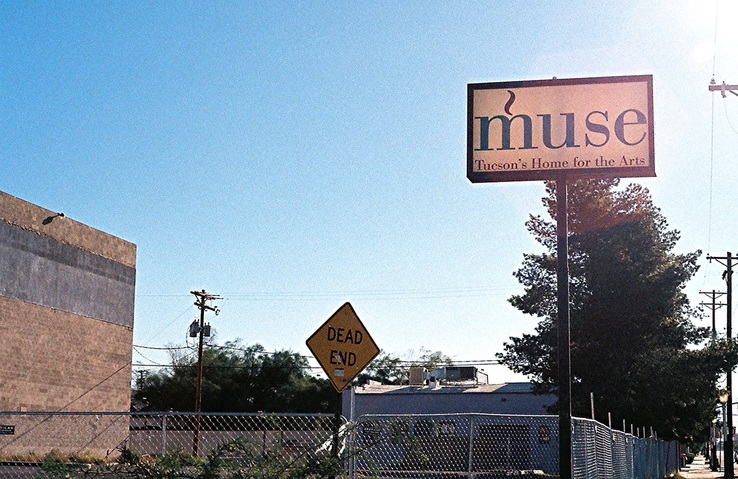
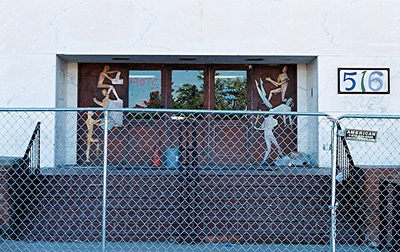
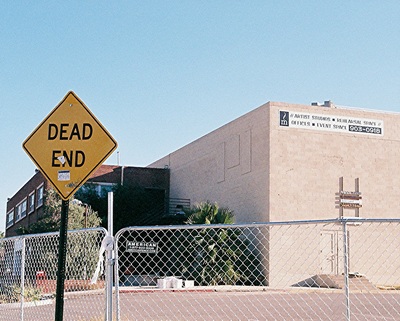
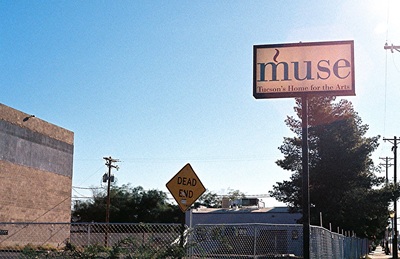
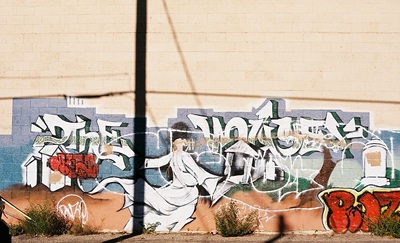
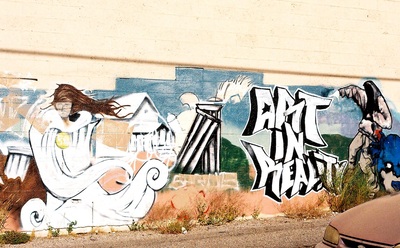
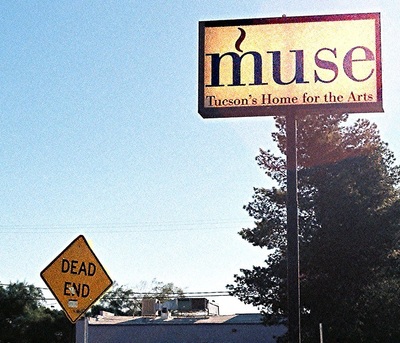
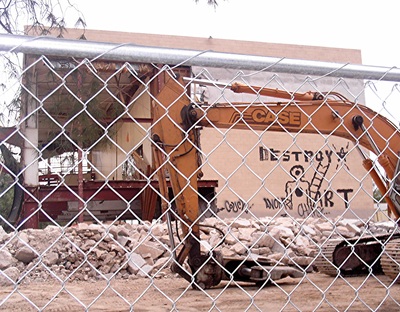
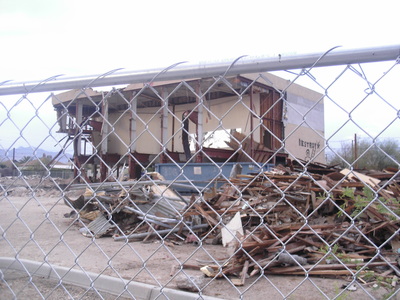
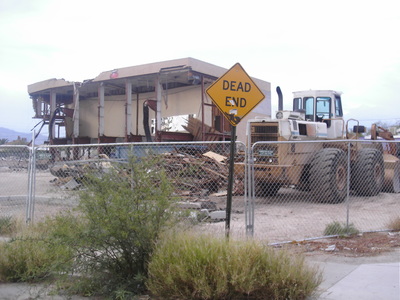
No comments:
Post a Comment